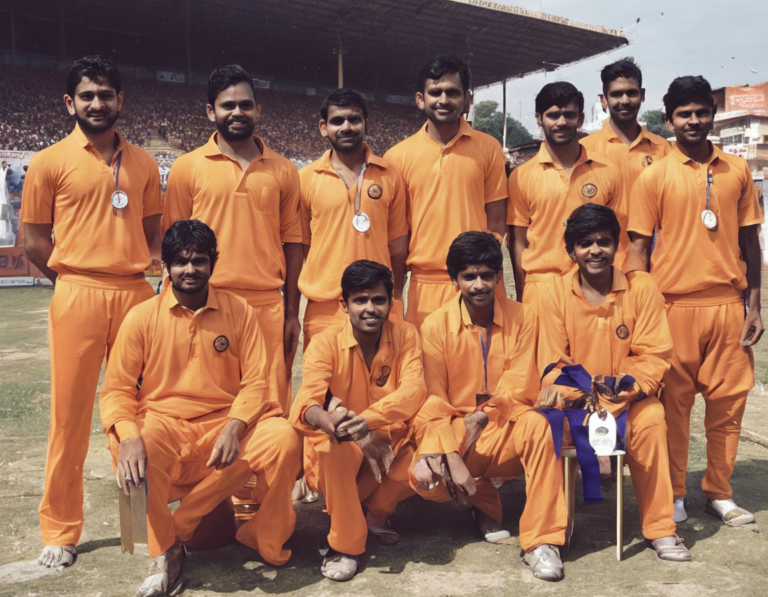
Ayodhya, a city located in the northern state of Uttar Pradesh in India, holds immense significance for Hindus around the world. Believed to be the birthplace of Lord Rama, it is a popular pilgrimage site and cultural destination. Traveling to Ayodhya can be a transformative experience, offering insights into rich history, spirituality, and architecture. In this article, we will provide you with comprehensive guidance on how to navigate Ayodhya, including tips for travelers, must-visit attractions, accommodations, local cuisine, and cultural etiquette.
Exploring Ayodhya: A Traveler’s Guide
Understanding the Cultural Significance
Ayodhya is considered the birthplace of Lord Rama, one of the most revered deities in Hinduism. The city is dotted with temples, ashrams, and monuments that celebrate his life and teachings. The Ram Janmabhoomi is the main pilgrimage site, where the Ram Mandir (temple) stands as a symbol of faith and devotion. The Hanuman Garhi temple, Kanak Bhawan, and Nageshwarnath Temple are also significant landmarks.
Best Time to Visit
The ideal time to visit Ayodhya is during the winter months, from November to February, when the weather is pleasant and suitable for exploring the city on foot. Ram Navami and Diwali are major festivals celebrated with great fervor in Ayodhya, offering a vibrant cultural experience for travelers.
Getting There
Ayodhya is well-connected by road, rail, and air. The nearest airport is in Lucknow, around 130 kilometers away. From Lucknow, you can hire a taxi or take a bus to reach Ayodhya. Several trains also pass through Ayodhya Junction, making it accessible from major cities like Delhi, Varanasi, and Kolkata.
Accommodations
Ayodhya offers a range of accommodations to suit every budget, from budget guesthouses to luxury hotels. Staying near the Saryu River offers picturesque views and easy access to the major attractions. Popular choices include Hotel Gupta Inn, Mani Mahal, and Ramprastha. It’s advisable to book accommodations in advance, especially during the peak pilgrimage seasons.
Must-Visit Attractions
- Ram Janmabhoomi: The birthplace of Lord Rama and the proposed site of the grand Ram Mandir.
- Hanuman Garhi: A temple dedicated to Lord Hanuman, known for its architectural beauty and panoramic views of the city.
- Kanak Bhawan: A temple dedicated to Lord Rama and Goddess Sita, famous for its golden idols and intricate artwork.
- Nageshwarnath Temple: A Shiva temple with a unique history and spiritual significance.
- Treta Ke Thakur: A famous temple complex dedicated to Lord Rama, featuring stunning architecture and serene surroundings.
Local Cuisine
Ayodhya offers a delectable array of vegetarian dishes that cater to both local flavors and those of visiting pilgrims. Chilkey Vali Dal, Bhajiya, Tamatar Ki Chutney, and Moong Dal Halwa are must-try delicacies. Ramayan Style Thali is a popular meal option that showcases a variety of traditional dishes on a single platter.
Cultural Etiquette
When visiting temples and sacred sites in Ayodhya, it is essential to dress modestly and observe local customs. Remove footwear before entering temples, maintain silence in prayer halls, and seek permission before taking photographs of deities or devotees. Respect cultural practices and show reverence to the religious sentiments of the locals.
Ayodhya Travel FAQs
Q: Is Ayodhya safe for travelers?
A: Ayodhya is generally safe for travelers, but it is advisable to exercise caution and be respectful of local customs and traditions.
Q: Are non-Hindus allowed to visit the temples in Ayodhya?
A: Most temples in Ayodhya welcome visitors of all faiths, but it is essential to adhere to temple rules and regulations.
Q: What clothing should I wear when visiting temples in Ayodhya?
A: It is recommended to dress modestly, covering shoulders and knees, when visiting temples in Ayodhya as a sign of respect.
Q: Can I take photographs inside the temples in Ayodhya?
A: Photography rules may vary from temple to temple. It is best to seek permission from the authorities before taking photographs.
Q: What is the significance of the Saryu River in Ayodhya?
A: The Saryu River holds cultural and religious importance in Ayodhya and is believed to purify the soul of those who take a dip in its waters.
Traveling to Ayodhya offers a unique blend of spirituality, history, and culture that leaves a lasting impression on visitors. By following these tips for travelers, you can make the most of your journey to this sacred city and immerse yourself in its aura of divinity and serenity.